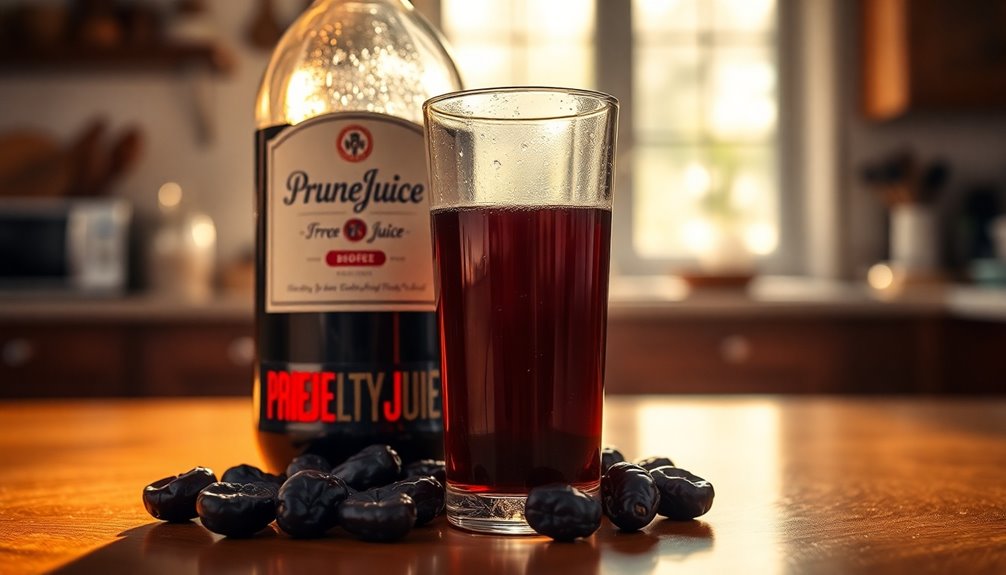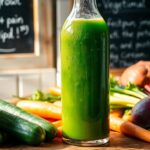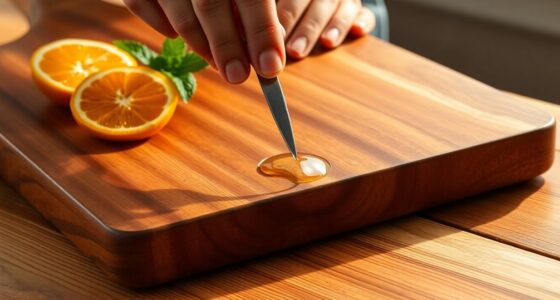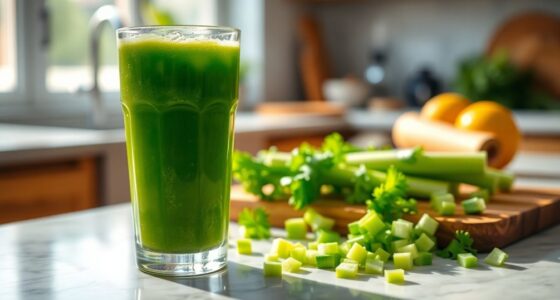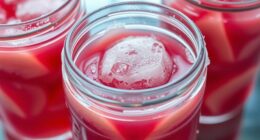After opening, prune juice is good for about 7 to 10 days if you store it properly in the refrigerator. To keep it fresh, make sure the container is tightly closed to minimize air exposure. Check for any off odors, unusual flavors, or mold before drinking. If you want to enjoy it longer, freezing is an option that can extend its shelf life significantly. There's more to learn about storing and using prune juice effectively!
Key Takeaways
- Opened prune juice lasts about 7 to 10 days when stored properly in the refrigerator.
- Keep the container tightly closed to minimize exposure to air and prevent spoilage.
- Regularly check for off odors, unusual flavors, or mold as signs of spoilage.
- For extended storage, freeze prune juice, which lasts 8 to 12 months.
- Thaw frozen juice in the refrigerator and consume within 3 to 5 days for best quality.
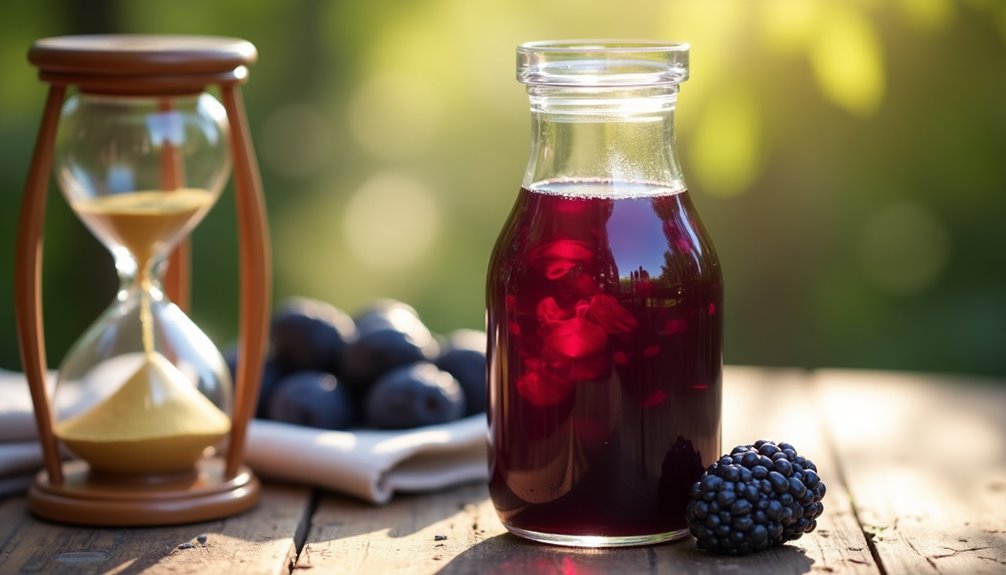
Have you ever wondered how long prune juice stays fresh after you open it? Once you crack open a bottle or carton of prune juice, you'll want to pay attention to how you store it. Generally, opened prune juice lasts about 7 to 10 days when it's properly stored in the refrigerator. This limited shelf life means you should plan to consume it relatively quickly to enjoy its freshness and benefits.
To keep your prune juice as fresh as possible after you open it, make sure to keep the container tightly closed. This simple step helps to minimize exposure to air, which can lead to spoilage. It's important to note that once the seal is broken, the juice is more susceptible to environmental factors that can affect its quality. If you notice any signs of spoilage, such as off odors, unusual flavors, or even mold, it's best to err on the side of caution and discard it.
If you find yourself with more prune juice than you can consume within that week, you have another option: freezing. Prune juice can be frozen to extend its shelf life significantly, lasting anywhere from 8 to 12 months in the freezer. This is an excellent way to make sure you don't waste any juice. Just be sure to store it in an airtight container, leaving some space at the top, as liquids expand when frozen.
When you're ready to use your frozen prune juice, thaw it in the refrigerator. Once thawed, you'll want to consume it within 3 to 5 days to ensure you're enjoying it at its best. Keep an eye out for any changes in taste or smell after thawing, as these can be indicators that the juice has started to spoil.
If you're curious about how to incorporate prune juice into your diet, you might find it beneficial for digestive health. It's a natural laxative and is often recommended for those seeking relief from constipation.
Frequently Asked Questions
Does Prune Juice Go Bad After Opening?
Yes, prune juice can go bad after you open it. If you don't store it properly, it won't last long.
You should keep the container tightly closed and refrigerate it immediately. Check for signs of spoilage like off odors, unusual flavors, or mold.
To enjoy the best quality, try to consume it within a week or so. Remember, proper storage is key to maintaining its freshness and flavor.
How to Know if Prune Juice Is Bad?
When it comes to prune juice, trust your senses like a detective on a case.
If you notice an off odor, weird flavor, or any change in color, it's likely gone bad. Mold on the surface? Toss it out immediately.
Also, keep an eye on the container—if it's leaking, rusting, or bulging, don't take any chances.
Always do a quick sniff and taste check before sipping that juice!
How Long Is Juice Good After Opening?
When you open juice, its freshness can vary based on the type.
Generally, most juices last about 5 to 7 days in the refrigerator. You should always store it in a tightly sealed container to keep it fresh.
Keep an eye out for signs of spoilage, like off smells or changes in color. If you notice anything unusual, it's best to toss it out to avoid any health risks.
Always check the expiration date too!
How Long Does Prune Juice Take to Loosen Bowels?
If you've ever felt like a tortoise stuck in molasses, prune juice could be your speedy solution!
When you drink 4-8 ounces, you can expect results in just 1-3 hours. That sorbitol works like magic, drawing water into your colon and helping you out of that constipation jam.
For best results, sip some before bed, and let the juice work its wonders overnight for a more comfortable morning!
Conclusion
In conclusion, once you open a bottle of prune juice, it's best to use it within 7 to 10 days for optimal freshness and flavor. Remember, "a stitch in time saves nine"; taking care to store it properly will help you avoid waste and ensure you enjoy its benefits. Keep it tightly sealed in the fridge, and you'll be set for a tasty and healthy addition to your diet. Cheers to good choices!
Cindy thoroughly researches juicing trends, techniques, and recipes to provide readers with practical advice and inspiration. Her writing style is accessible, engaging, and designed to make complex concepts easy to understand. Cindy’s dedication to promoting the advantages of juicing shines through her work, empowering readers to make positive changes in their lives through the simple act of juicing.

